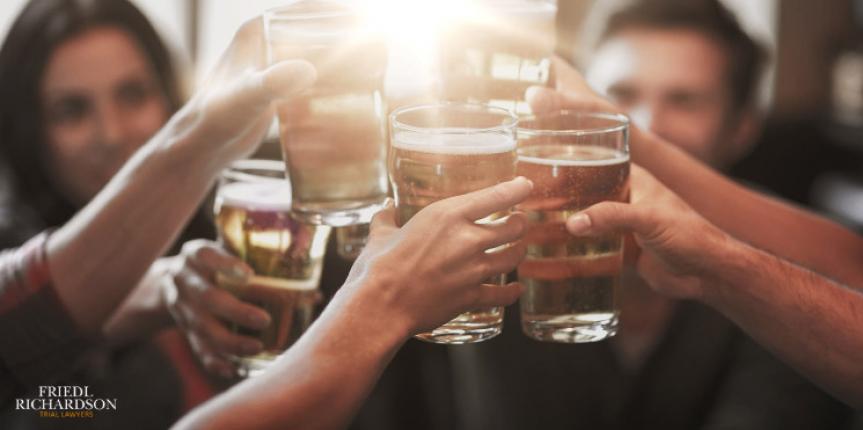At What Point Does Behavior in a Bar Become a Legal Harassment Risk?
When people think of harassment, it’s often associated with the workplace, public congregation areas, meeting spaces, universities and similar. That’s because these environments have seen some of the most active litigation and new laws being passed specifying how people should behave and punishing those who continue to behave badly. However, the drinking establishment has always been exempt. Afterall, bars and drinking holes have been were people traditionally go to unwind, let loose and even find a date. Why in the world would anyone go to a bar if they didn’t expect some kind of attention to occur? That kind of logic no longer holds true anymore, and drinking establishments may become the next frontier with regards to how people are to behave around each other. And for the business itself, this potential move should be a wake-up call to a brand new type of liability the bar owner may be held responsible for financially, known as DRAM shop liability.
Typical Bar Behavior, Right?
Ask any woman and she either knows of or has experienced some creep who’s had a bit too much, lost his inhibitions and became too forward in a bar situation. It’s expected and commonplace. In fact, most guys expect to get into it with each other protecting female friends when they walk into a bar with a partner or acquaintance and other men are there. The stupid come-on lines, the dancing too close on the dance floor bit, the noisy, rude attention-getting is expected in a bar because, after all, going to a bar means getting drunk and with that comes less-than-stellar behavior.
Up to now, bars have operated under a “drink at your own risk” unsaid rule. If people go to a bar, they should expected dumb behavior to happen occasionally. If you don’t like it, don’t go. Granted, there are some knuckleheads who really get out of control, and then the bouncer steps in to physically move the goof out on the street and away from the paying patrons. But that’s about as far as the control goes.
In reality, however, bartenders are finding themselves more and more getting involved with separating the pushy from those not interested. A variety of tools are used from orders to coaxing the drunk to forget about the person and chase another drink elsewhere in the bar. But it boils down to some kind of intervention. And as rules against sexual harassment or harassment in general have become commonplace in regular society, it only begs the question when the same would apply to the drinking environment as well. That’s where the liability issue comes in to play.
A Business Obligation
Does a bar have a duty to protect its patrons from harm? Many would argue "yes." In general, the bar is a business and should provide a safe environment for the customers to engage in their entertainment peacefully. So then how far is the line from a general safe environment duty to a duty to protect people from being aggressively hit on and harassed? It’s legally a very thin line and probably just waiting for that one clear-cut case to occur to push the matter over the edge.
Activists nationwide are already pushing the matter into the spotlight, trying to create a legal obligation for bar owners and managers to proactively intervene. Afterall, if a patron is being bothered sexually, how different is that from being bothered in an assault? A bouncer should step in equally in both situations, many would argue. And the argument of people putting themselves in risky situations has repeatedly been shot down in court, even when alcohol was involved. The “two-to-tango” concept means all present are involved to make sure the law is followed, not just the victim or aggressor.
Many legal scholars might opine that a bar has no obligation to be a Good Samaritan and always be policing people. But that line of thinking is eroding quickly in today’s society. And bar establishment who are seeing down the road have a pretty good feeling their duty to protect patrons is going to expand soon into the sexual harassment arena, especially when someone gets hurt and nothing was done to prevent it in the bar.
Get Proactive, Develop Prevention
So, what’s a drinking establishment to do? First off, properly train staff. Bartenders and bouncers should be prepped and trained on how to deal with potential harassment situations quickly. 90 percent of situations just need a simple intervention to highlight the problem behavior is being seen and is unacceptable, and the problem then stops. Where the patron continues or causes a problem, then it’s time for the bouncers to do their job and execute a removal right there. As soon as the general environment knows the behavior is not allowed, it will almost practically disappear completely.
On the other hand, if a bar knows harassment occurs, and nothing happens to shut it down, the behavior will continue and increase. Word gets out that people can be harassed and repetition becomes the norm. Then the bar is really putting itself in a bad spot when the first bad situation triggers a serious injury or worse. Again, a bar is a business and has a duty to serve its patrons safely. That’s a broad duty which can be interpreted to apply to much more very easily by a progressive court case. And the time is becoming ripe for such a case to occur socially.
If you’re not sure how to get started, but you want your bar establishment to be proactive and not become the next big legal headline, consider legal help. Sitting down with a simple attorney consultation and going over how to set up a properly designed training program is worth the time invested. Remember, prevention is a heck of a lot cheaper than defending a legal case after the fact.






